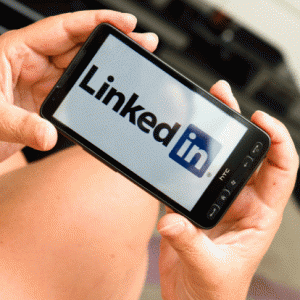Join our online community and be inspired to achieve your goals!
VIEW OUR FACEBOOK PAGEHow to generate traffic to your LinkedIn profile

Since most recruiters and many employers use LinkedIn to source candidates – it is essential that your profile can be easily found. Even if you’re not currently searching for a new role – as a professional in any industry, you need to effectively manage your online presence since it provides the first impression to people doing business with you.
A professional LinkedIn profile will support your current role, demonstrate credibility, and validate your expertise to potential customers or business associates. Also, a well-developed LinkedIn profile and vanity URL will support Google searches and help ensure your profile is returned at or near the top when people search for you.
LinkedIn certainly helps if you’re seeking a new role, but it is also essential to help you build your profile as an expert in your field, generate leads for your business, and drive traffic to your website. So how can you generate the much needed traffic to ensure you are one of the chosen few?
- Decide on keywords and develop your LinkedIn content around these. Think about the skills and abilities you want to be known for. What will people search for when looking for someone like you?
- Include a professional-looking photo (head and shoulders) that enables people to recognise you. Profiles with pictures are much more likely to generate traffic so don’t skip this step. No picture doesn’t instil any sense of trust or engagement from the audience – in fact many people may wonder what you’re hiding.
- Create a custom headline and make sure to use up all 120 characters to describe what you do and the market(s) you serve. Don’t let LinkedIn default to your current title – make it descriptive, engaging and personalised to you.
- Ensure your profile content positions you as the ideal person for the opportunity. This means being very definitive about what you offer and not trying to be ‘all things to all people’. Many people believe they may miss an opportunity if they don’t ‘cover all their bases’ however the problem we see with this approach is that you will never be the right person for anyone – because people look for experts in their field. Decide on what you want to go after and focus!
- Prove your expertise with evidence – people love proof because, again it creates credibility and professionalism and a desire to do business with you. Evidence could include specific statements detailing what you offer, skills endorsements, recommendations from others, and links to websites, presentations and articles you have written.
- Create a vanity URL using your full name or area of expertise.
- Share content including articles, industry news, accomplishments, and your own articles – it takes minutes but helps you become more visible while providing opportunities for others to engage with you. Sharing your own content helps build your credibility and allows people to get to know you (and your offer) better to support their decision in working with you. According to LinkedIn, users who share content on the professional social network at least once a week are much more likely to be contacted for new opportunities than people who don’t share.
If you would like more tips on how to optimise your LinkedIn profile to position yourself in your market, increase your chances of being found and generate more traffic to uncover job opportunities, contract/freelance work and/or word of mouth referrals, our team of Professional LinkedIn Writers can help! Please see our LinkedIn profile writing service for more information.






